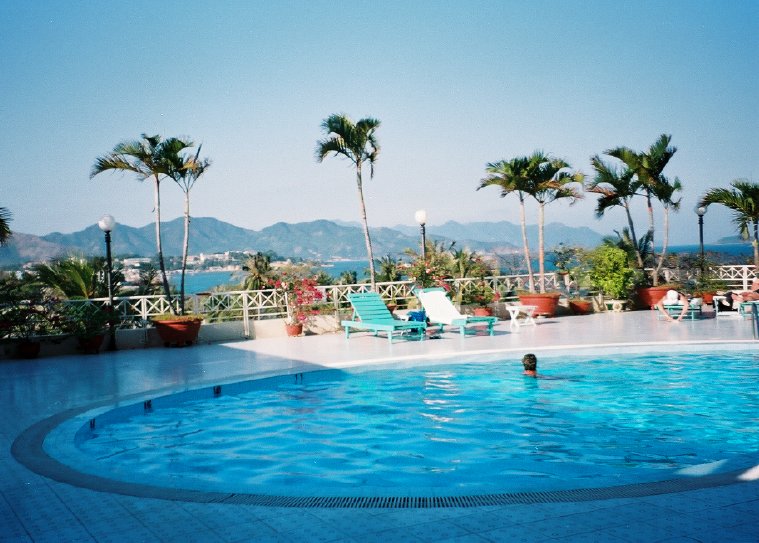INDOCHINA INTERNATIONAL CONSULTING CO., LTD
HO Add: 62L/36 Nguyên Hồng, Ward 11, Bình Thạnh District, HCMC - Vietnam
Biz Office Add: #48 Road No 11, Quarter 6, Hiệp Binh Chánh Ward, Thủ Đức, HCMC - Vietnam
®Source: http://viipip.com should be clearly quoted for any use of information extracted from our website.
Publication permit No: 60/GP-TTĐT , April 05, 2010.

Economic theory defines the “triangle of impossibility” as a nation’s inability to simultaneously pursue three macroeconomic goals: a stable exchange rate, free capital flows, and an independent monetary policy. This theory was named the Mundell-Fleming Model, put forward by Robert Mundell and Marcus Fleming in the 1960s.
The key Chinese legislation is Circular 142/2008 of the State Administration of Foreign Exchange (SAFE). Under this circular, the Renminbi funds of a foreign invested enterprise (FIE) created by converting registered capital must be used within the scope of business approved by the respective authorities, and cannot be used for domestic equity investments. The conversion of registered capital is based on the review of the usage of the fund, and conversion is only granted for a single demand at a time for actual payment in RMB. The company must submit documentary evidence of the purpose of the Renminbi funds for approval of the conversion. Except for certain specified purposes (for example petty cash or salaries), the converted RMB funds must be paid to the approved recipient within a prescribed time.
According to Circular 19/2015, which came into effect on June 1, 2015, FIEs across China will be able to convert foreign exchange in their capital accounts into RMB at any time. No review of the purpose of the funds is required when doing the conversion. By being able to convert foreign exchange at a time when the exchange rate is favourable, an FIE can suitably hedge its exchange risks.
However, to use the converted RMB, an FIE still needs to provide supporting documents and go through the review process with the banks for each withdrawal.
It is worth noting that Circular 19 does not apply to foreign exchange loans borrowed by the FIEs. An FIE is still required to provide supporting documents for the bank’s review for each conversion and withdrawal of its foreign exchange loans.
Circular 19 also allowed FIEs to use funds from their capital accounts for onshore equity investment once registration formalities are completed. However, it still restricts the use of the RMB funds obtained through foreign exchange conversion in several ways set out in the SAFE’s Circular 142. Specifically, the circular specifies a ‘prohibited list’. Under this list, general FIEs (to differentiate from foreign-funded real estate enterprises, and foreign-funded equity investment enterprises) are prohibited from directly or indirectly using RMB funds obtained from foreign exchange conversion for purposes outside of its business scope, for investment in securities, to grant RMB entrusted loans, to repay inter-company debt, or to purchase non-self-use real estate.
The prohibition enhances the control of the foreign exchange that flows into the country in the name of foreign direct investment, by ensuring that it is utilised for the specific business activities written into the relevant FIE’s business scope, but not for other business activities.
Compared to the SAFE’s circulars 142 and 19, the controls in Vietnam are much looser. In Vietnam, the latest legislation in this area is Circular 19/2014 by the State Bank of Vietnam (SBV). When converting foreign currency capital into VND, FIEs have never been restricted. In reality, they can do it any time they want.
In using the VND converted from foreign capital, FIEs are in general treated equally to domestic enterprises. As per current laws, FIEs are allowed to do anything not specifically prohibited. This means that after the converted VND is transferred into settlement accounts, it can be used to make term-deposits at banks, invest in fixed income securities issued by the government or by companies, and make loans to other parties without restrictions, as long as the relevant documents are submitted to banks. This is totally different from China.
The purpose is for Vietnam to promote foreign investment capital. Unlike China, Vietnam’s trade balance has not been generating much surplus, and indeed is often in deficit, and the balance of payments has been relying significantly on capital and financial balance, in which FDI plays an important role. However, this lax control may create problematic outcomes. First, the quality of statistics for foreign direct and indirect investment capital is weakened.
Second, the money supply and exchange rate of VND may be strongly pressurised when a large amount of foreign capital flows into Vietnam simultenously, like in 2007.
Third, carry trade activities are encouraged. Foreign investors could redirect funds that had been brought into Vietnam for job-creating investment to term deposit accounts or government bonds. They could earn high interest rates there with almost no risk, and then at maturity transfer the funds back into USD in their investment capital account and remit them back off-shore. Because the dong has remained fairly stable since 2011 compared to other currencies, their yields would be much better than if they had held the money in fixed deposit accounts off-shore, especially in the ultra-low interest rate environments in some global markets. The results are lower deposit rates at banks for residents compared to CPI, and lower yields that banks can earn from investment in government bonds, forcing them to raise lending rates for residents.
Fourth, there is a gap for FIEs to manipulate the price transfer as they are allowed to borrow from abroad in VND at very high yields to increase expenses for tax-reducing purposes. Moreover, the lending to each other takes market share from local banks.
In this regard, it appears that foreign direct investment is being treated more favourably than foreign indirect investment. In particular, Circular 05/2014/TT-NHNN, issued five months earlier than the SBV’s Circular 19, stipulated that the balance in an indirect investment capital account can be transferred to a payment account in VND, but must not be changed into term or saving deposits.
- FDI capital continues to pour into Vietnam (6/11/2025 1:20:33 PM)
- Thanh Hoa receives good news: Preparing to have an additional industrial park of up to 470 hectares, creating jobs for nearly 30,000 people (6/11/2025 1:15:09 PM)
- Industrial Park Real Estate: Waiting for the New Generation of FDI (6/11/2025 1:10:15 PM)
- A wealthy Vietnamese city will have two special economic zones after the merger (6/11/2025 1:04:42 PM)
- 30 billion USD capital FDI in Việt Nam by 2025, a series of "ông big" races to expand the land fund (6/11/2025 12:55:26 PM)
- the 2nd largest city in the North will start construction on an international economic zone (6/11/2025 12:50:20 PM)
- Japanese giant Sumitomo continues to want to build an industrial park in the countrys fourth smallest province. (6/11/2025 12:40:45 PM)
- 3 foreign corporations want to invest billions of dollars in Ba Ria - Vung Tau (6/11/2025 12:34:30 PM)
- Lotte Group member starts construction of nearly 1,000 billion VND logistics center in the province with the most industrial parks in Vietnam (6/11/2025 12:33:26 PM)
- Forming a regional center for manufacturing spare parts and components (6/11/2025 12:24:08 PM)
- Vietnams first wafer factory is about to start construction (6/11/2025 12:19:09 PM)
- Dong Nai attracts foreign investors (6/11/2025 12:13:27 PM)
- Tay Ninhs largest industrial park welcomes a $150 million high-end knitted fabric factory project (6/11/2025 12:11:00 PM)
- (6/11/2025 12:09:10 PM)
- Vietnam will become a destination for Chinese investors in the future (11/6/2023 1:03:19 PM)

- FDI capital continues to pour into Vietnam
- Thanh Hoa receives good news: Preparing to have an additional industrial park of up to 470 hectares, creating jobs for nearly 30,000 people
- Industrial Park Real Estate: Waiting for the New Generation of FDI
- A wealthy Vietnamese city will have two special economic zones after the merger
- 30 billion USD capital FDI in Việt Nam by 2025, a series of "ông big" races to expand the land fund










 ADB: Vietnam’s 2009 GDP growth to be highest in South East Asia
ADB: Vietnam’s 2009 GDP growth to be highest in South East Asia MGM Grand Ho Tram: Vietnam’s First ‘Las Vegas Style’ Integrated Resort
MGM Grand Ho Tram: Vietnam’s First ‘Las Vegas Style’ Integrated Resort Nha Trang’s Twin Towers project licenced
Nha Trang’s Twin Towers project licenced Foreign investors still have good opportunities in Vietnam
Foreign investors still have good opportunities in Vietnam Sierra Wireless gets a foot in Vietnam’s ICT market
Sierra Wireless gets a foot in Vietnam’s ICT market